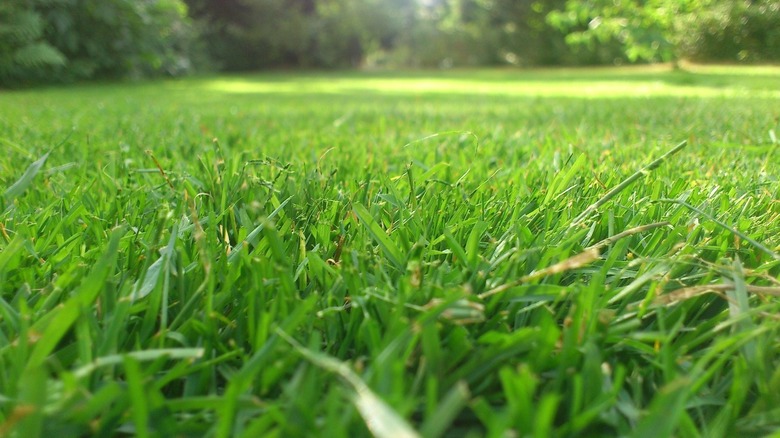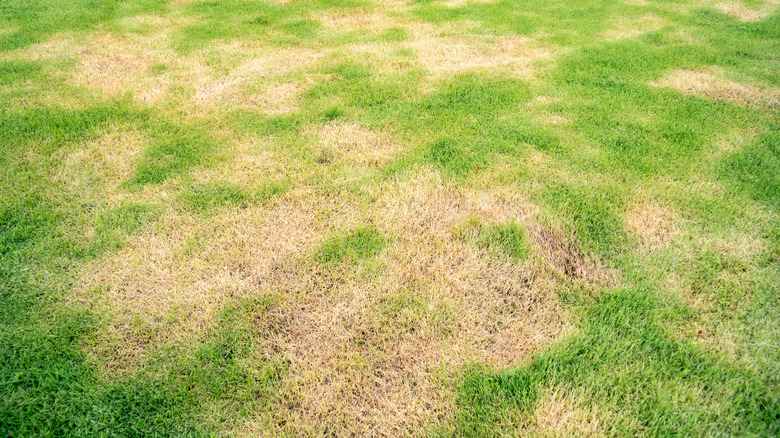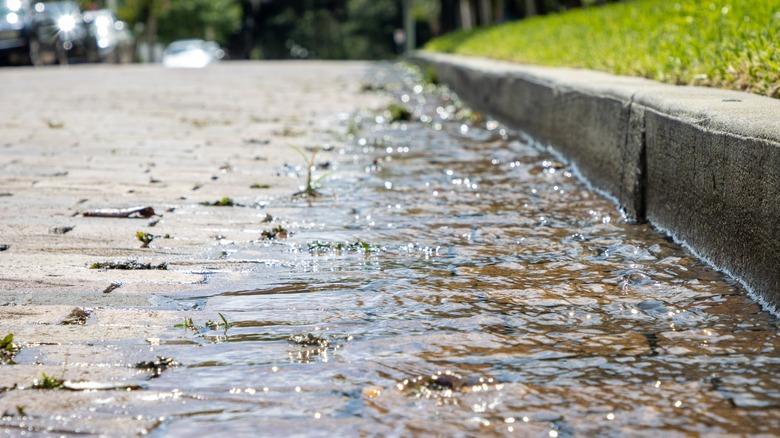Is Epsom Salt The Secret To The Greenest Lawn All Summer Long?
Having a vibrant and healthy lawn is pretty much every homeowner's dream, which is why the allure of using Epsom salts to boost magnesium levels is so appealing. While you can make your lawn greener by routinely testing the soil, keeping to a watering schedule, and adding fertilizer, Epsom salts are also a good choice, but only under certain conditions. Epsom salt, which is scientifically known as magnesium sulfate, is a naturally occurring compound that consists of magnesium, sulfur, and oxygen. Although its name might suggest otherwise, Epsom salt is not actually a type of salt. It was first discovered in Epsom, England, and has been widely used for its therapeutic and horticultural benefits ever since.
It's thought that Epsom salts provide several benefits for your lawn, including giving it a magnesium boost that helps it with photosynthesis, improving overall health and color, and promoting nutrient absorption. That being said, using Epsom salts to make your grass greener is only advisable for lawns that are deficient in magnesium. Adding it to an otherwise perfectly healthy lawn can have some considerably nasty side effects, including potentially killing your lawn. When in doubt, it's never a bad idea to first test your soil to prevent any undesirable consequences.
How Epsom salts can help a nutrient deficient lawn
Using Epsom salts on your lawn is a pretty straightforward process. You just need to start by determining the appropriate amount based on your lawn's size. It's recommended that for every 100 square feet of turf, you use half a pound of Epsom salts. Next, you'll want to choose your application method. To create an Epsom salt spray, you'll need to dissolve 2 tablespoons of Epsom salts into a gallon of water and evenly spray the solution over your lawn once a month. For a soil drench, which is simply applying liquid to the base of plants or directly on the soil, just dissolve 1 cup of Epsom salts into 5 gallons of water. This should be done every six to eight weeks.
If you're seeding your lawn, just spread a thin layer of salt on the bare patches or the entire area before seeding, and then lightly water it to help with germination. Always water your lawn after application to make sure it's properly distributed. Also note that the best time of day to apply any Epsom salt mixture is in the late afternoon or when the sun is beginning to retire for the evening. If this is done any earlier, you risk burning the grass.
Always practice caution
While Epsom salt can offer benefits to nutrient-deficient lawns, there are several potential issues that you'll want to be mindful of. Overuse and frequent application can lead to buildup in the soil, which disrupts the balance of nutrients and can do harm to your lawn. Epsom salt mainly provides magnesium and sulfur, which means it's not addressing other elements like nitrogen, phosphorous, and potassium. This can cause imbalances and nutrient deficiencies in your stressed-out lawn. In addition to overthrowing the nutritional harmony of your soil, excessive use of Epsom salt can also have an effect on the pH level of your soil.
Another drawback worth mentioning is the risk of runoff and possible damage to nearby bodies of water, including groundwater. Epsom salt has a high solubility rate. During rainfall or irrigation, the salt can be carried away into sewers that eventually lead to rivers, streams, lakes, ponds, and the ocean. To lessen your environmental impact, it's best to use it in moderation, as it can accumulate to toxic levels and harm susceptible ecosystems and wildlife.


